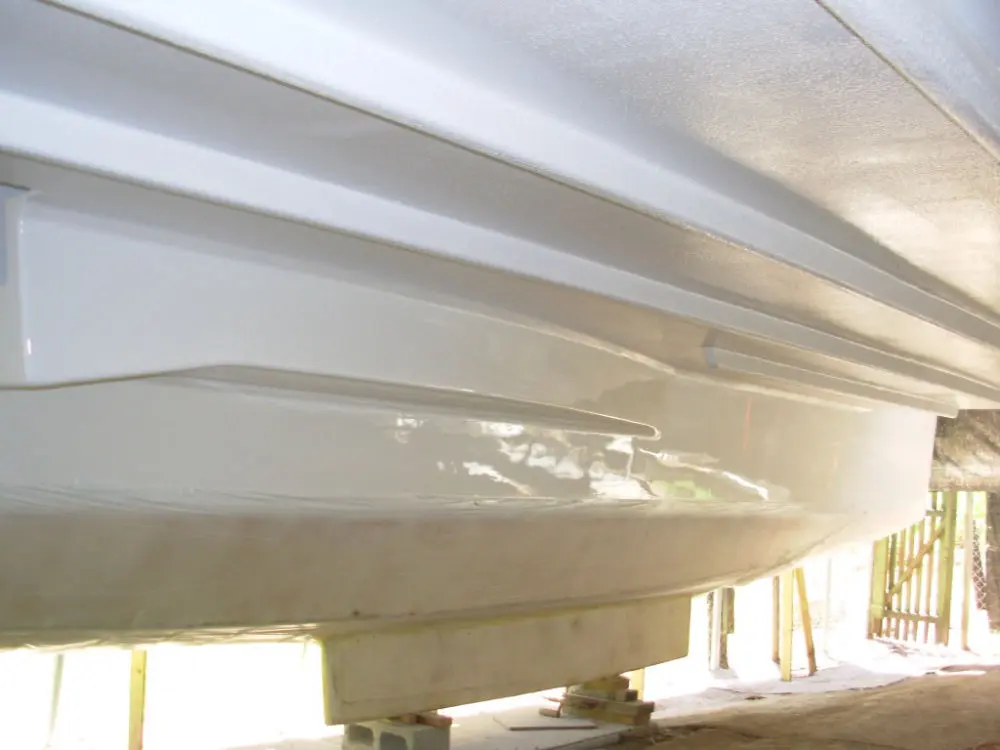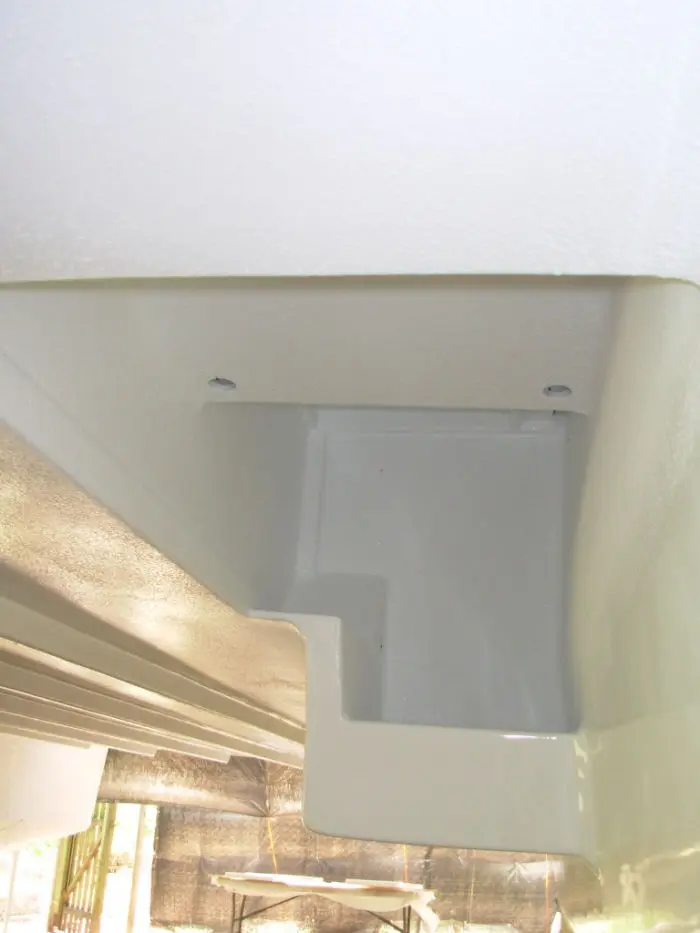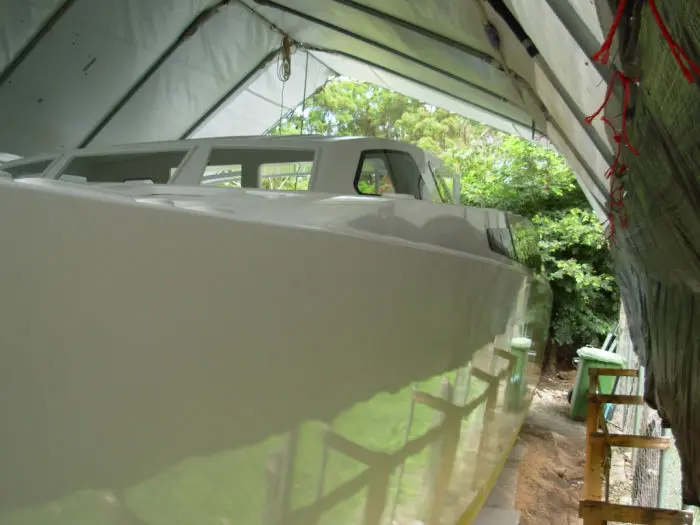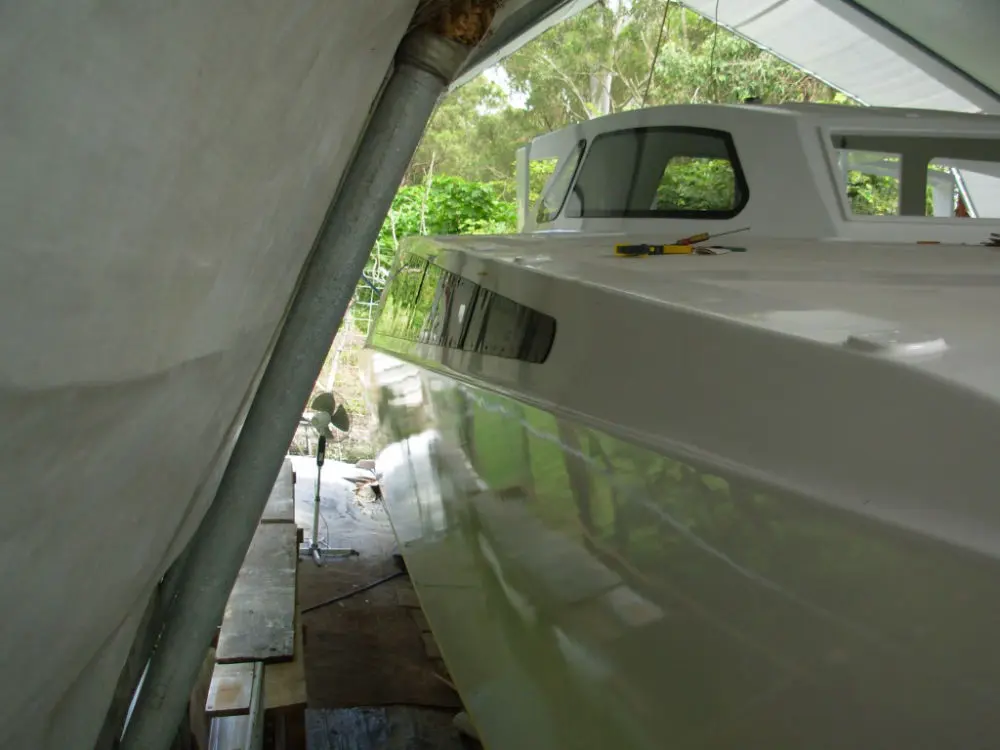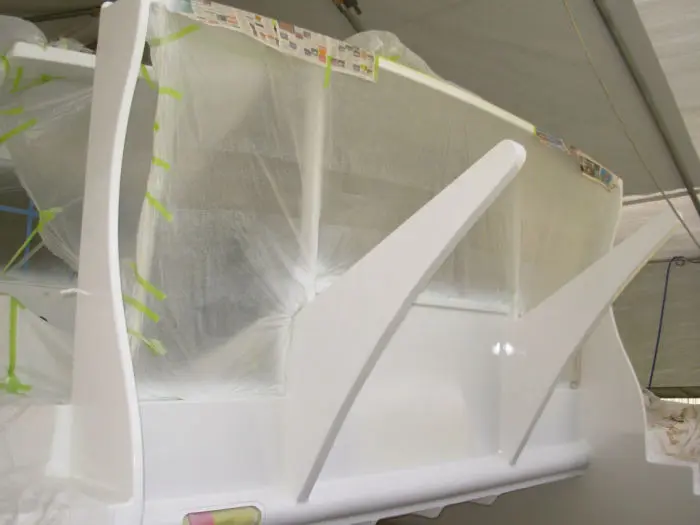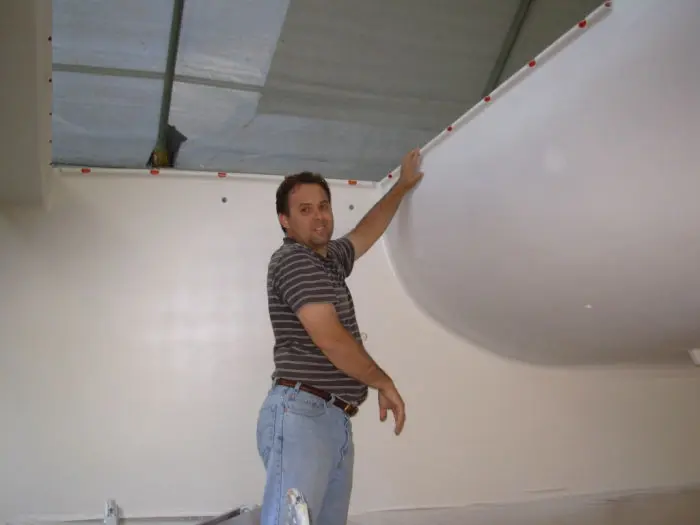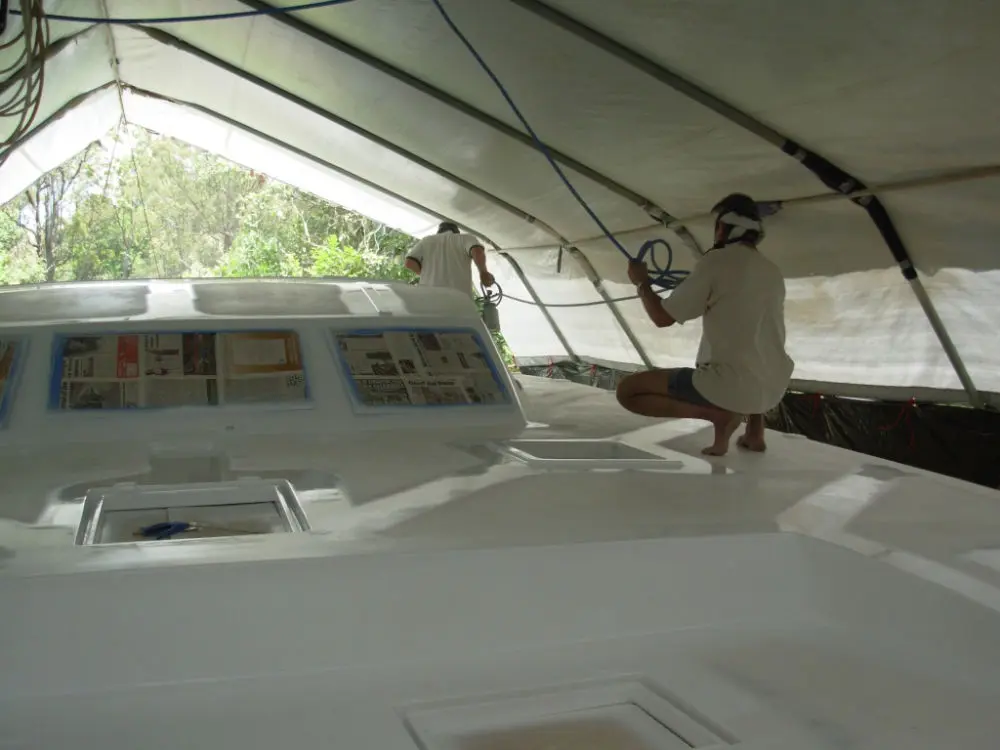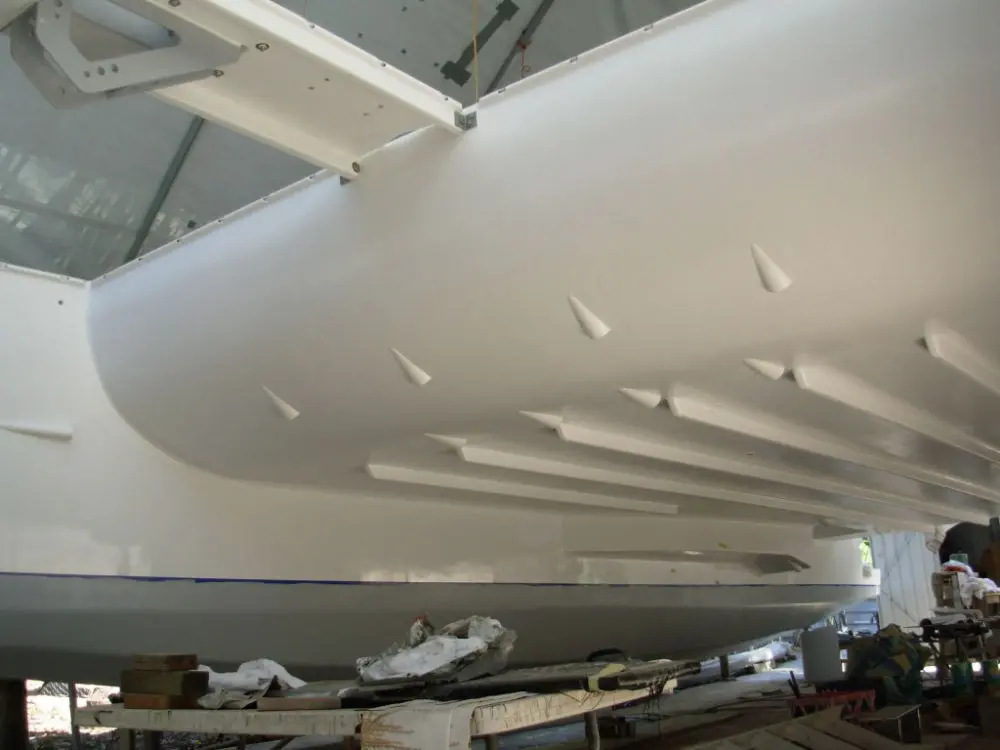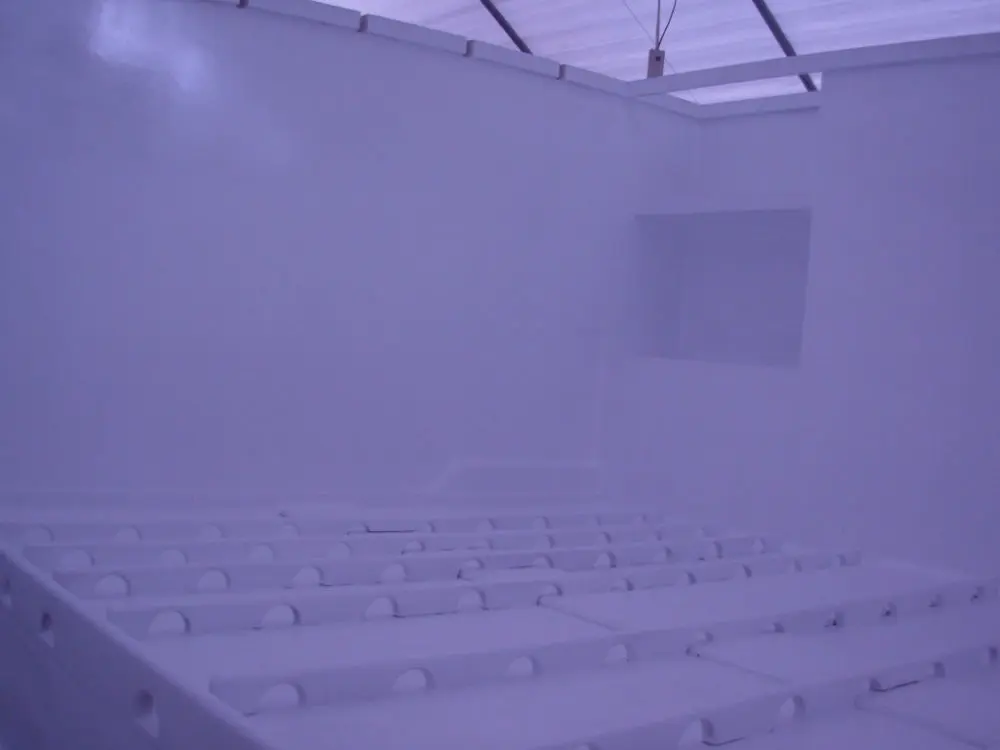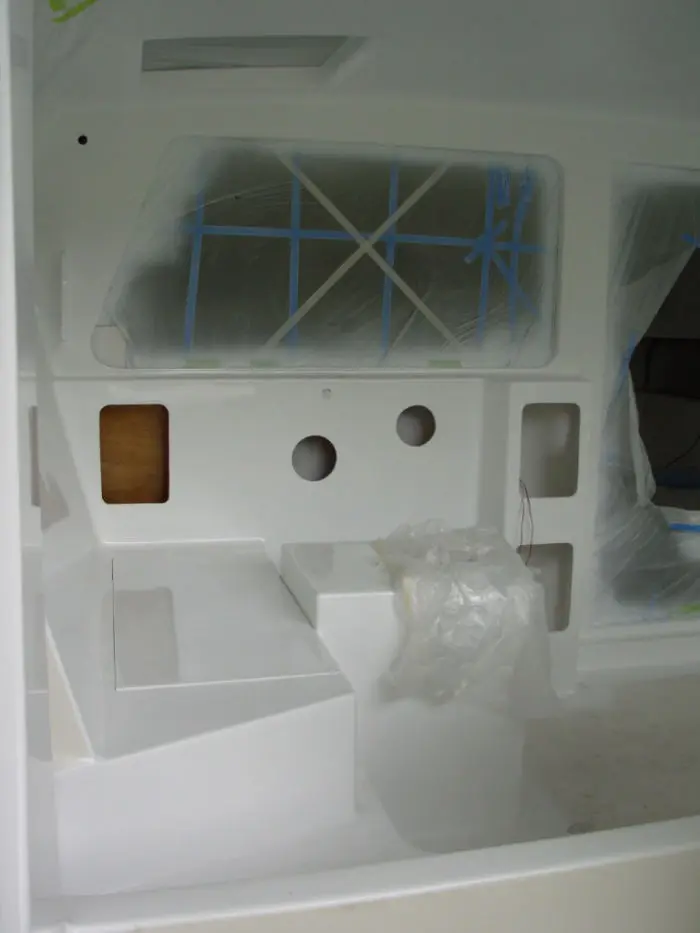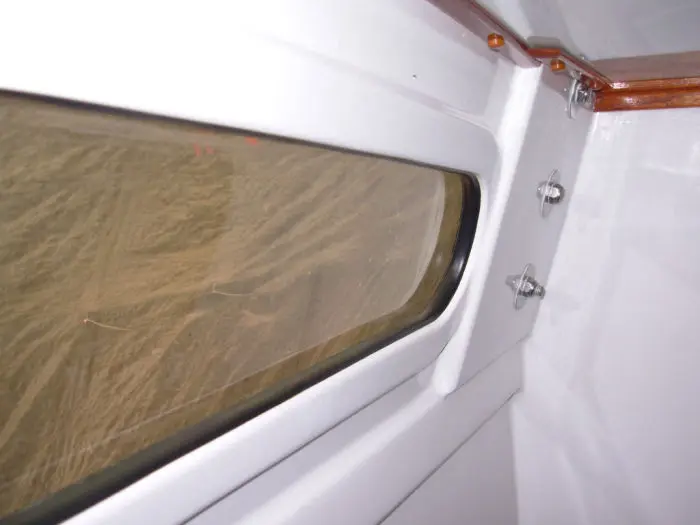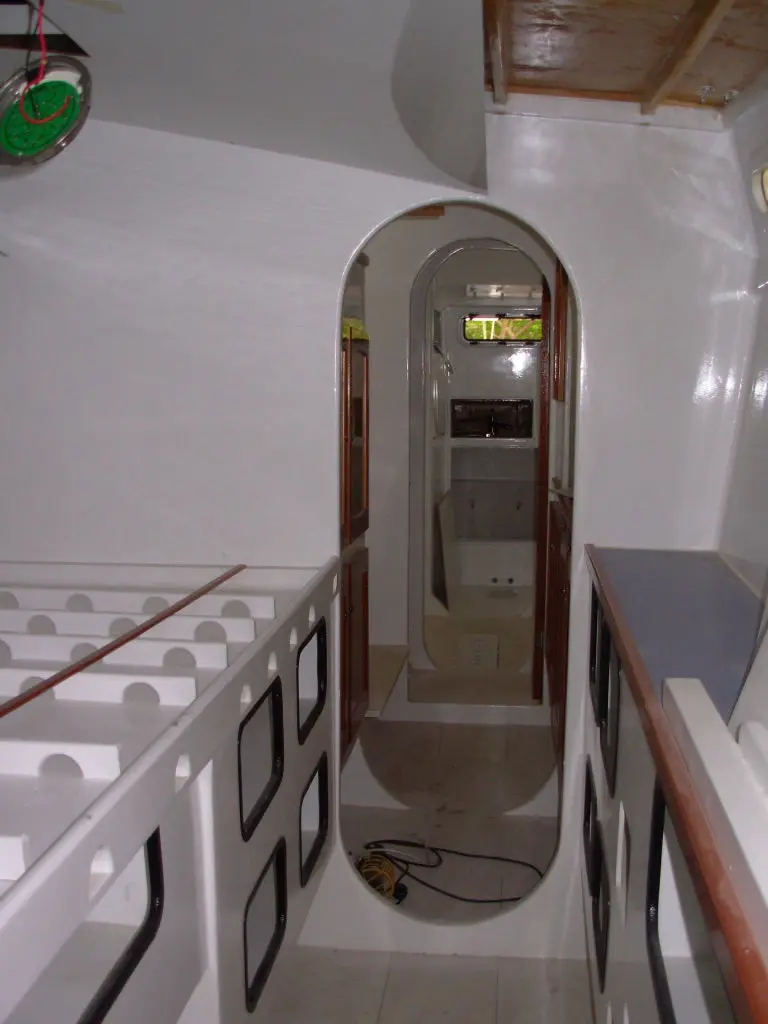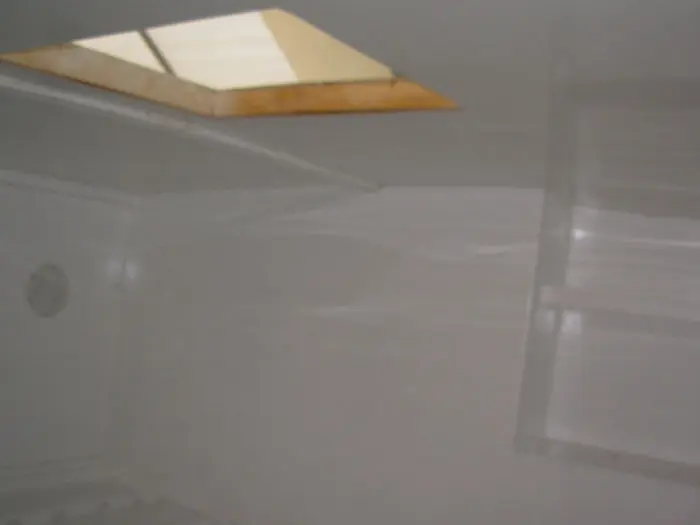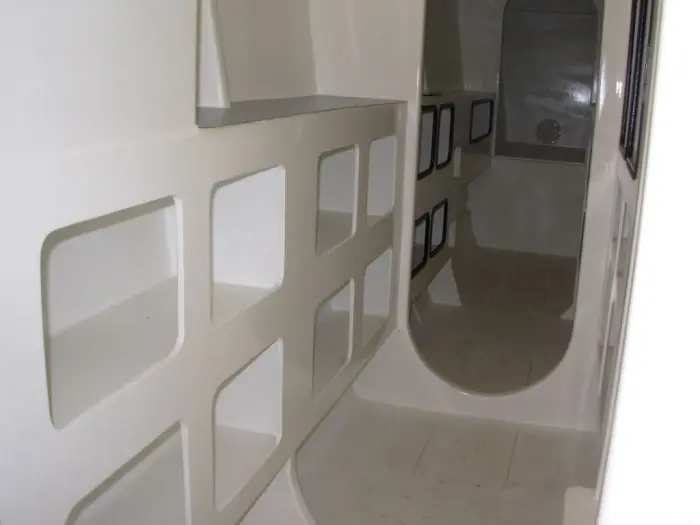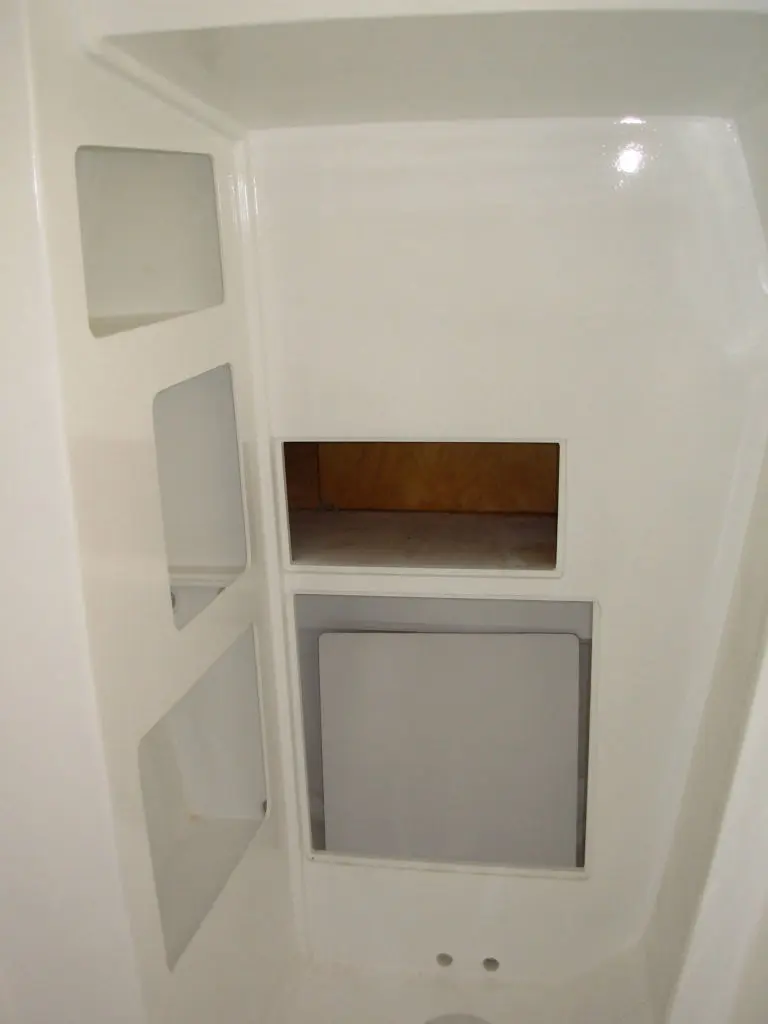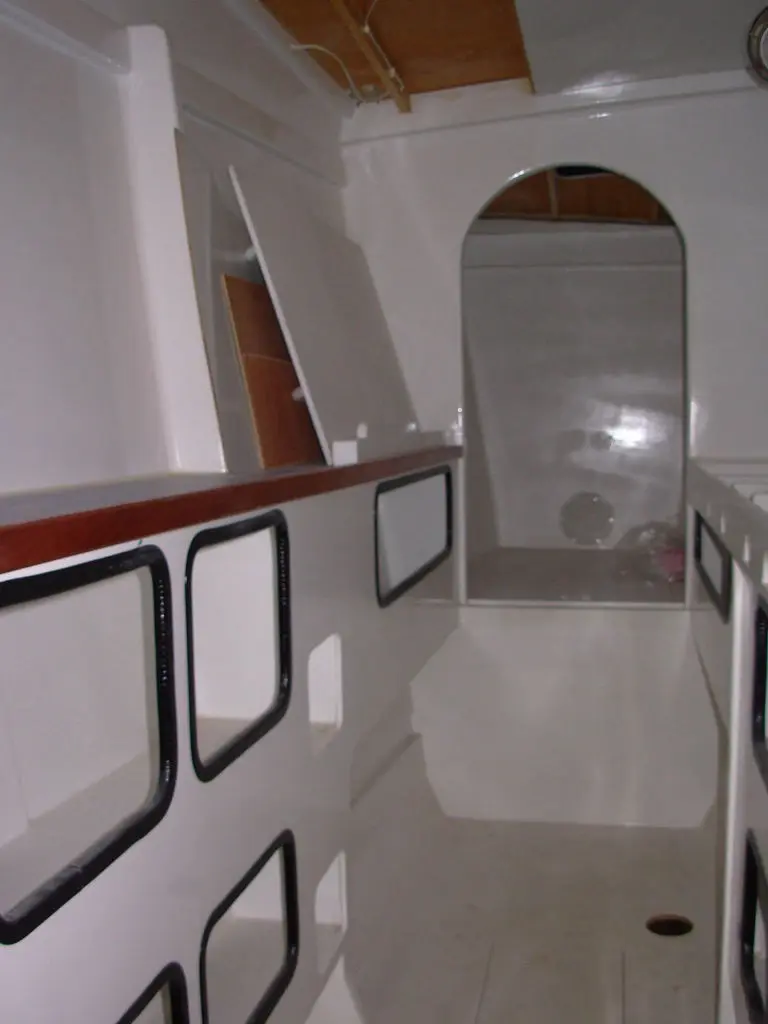Catamaran Painting
TOPCOAT - EXTERNAL
Spraying the catamaran's topcoat was very satisfying. These photos don't quite give the painting justice, as it comes up much better than what we show here.
Wanting to use the gravity-feed spray gun presented some more challenges. As opposed to pressure pot spraying, gravity fed requires top-ups of the spray-gun after each litre is used and cannot be used upside down, so some thought needs to go into how the underside painting is going to be completed.
We used the Star S106 spraygun with a smaller nozzle (1.5mm - 2mm) to get the finer finishing coat. This did require some testing which was done on the internal surfaces. We logged the thinning quantities on the whiteboard when we got the finish we looked for.
All that was needed now was the temperature, humidity and getting the ventilation right so that overspray did not resettle on the newly painted surface. The extra time spent in prior preparation each spray day, paid handsomely.
Back to 'discount trade tools' people, we were told that it would be cheaper to buy a whole new unit than the three bits required to change the current gun to the smaller nozzle.
There are a few tricks here to with respiration (refer our warnings below), thinning of the topcoat, temperature and coat thickness which we diarised in our Catamaran Building Books.
Using a clean pair of disposable overalls (sometimes called coveralls) and butyl-rubber gloves are an absolute must. We went further and used a barrier cream on the face, wrists/hands and ankles (ie areas where if anything could be exposed, it had barrier cream coverage).
